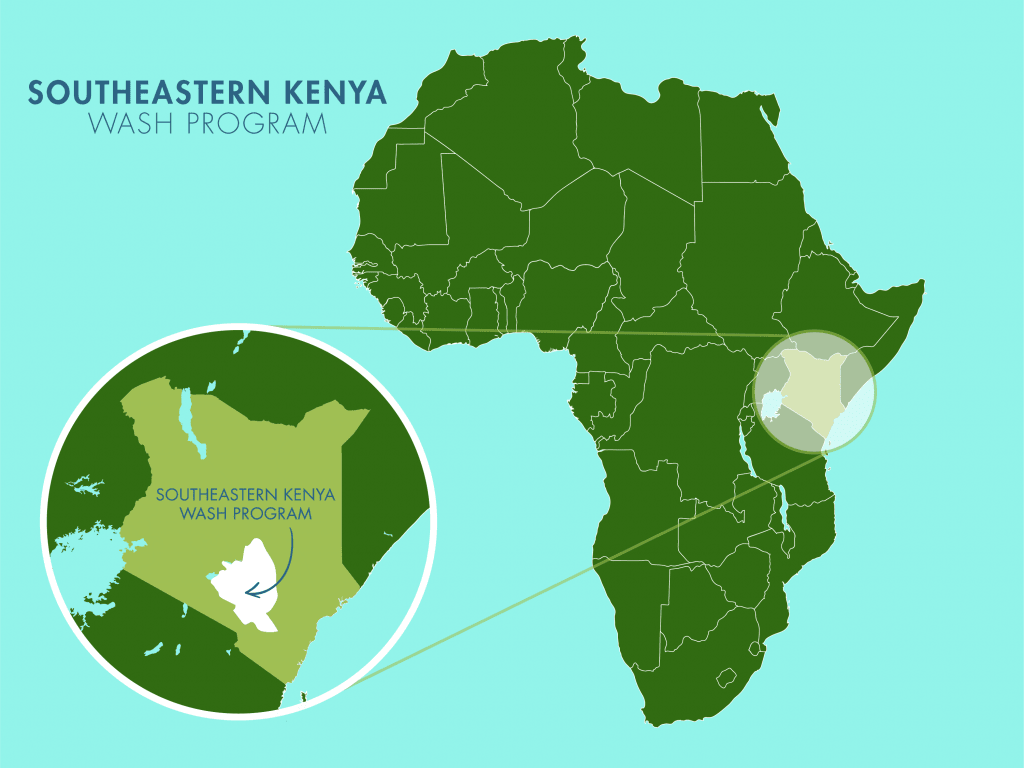500 people call the community of Kithusye home — but without a reliable, nearby source of clean water, daily life is a constant struggle. The only options are a protected well located an hour’s walk away or digging holes into the dry riverbed, where collecting enough water can take up to two hours.

Walking to collect water.
The extraordinary amount of time consumed collecting water means people must ration water.
"Most residents who live far away from the current sources can make only a single trip; hence, water has to be used sparingly at home, leading to poor hygiene and a lack of water for irrigation. School-going children spend their evenings, holidays, and weekends fetching water, causing exhaustion and a lack of energy to focus on studies, ultimately causing poor grades," shared Field Officer Alex Koech.
But that is not the only issue community members must confront. The water they collect often puts them at risk of contracting water-related illnesses that negatively impact their health.
"The protected shallow well that was set up earlier this year serves a small portion of the community. Thanks to the scattered pattern of population, some members who reside far away depend on the seasonal and contaminated scoop holes, which offer saline water but expose them to gastrointestinal problems, including vomiting, nausea, diarrhea, and stomachaches. Treating these infections is costly because, being mostly farmers, residents reap very little from their drought-stricken farms or livestock. It forces them and their children to forego crucial activities like working on their farms, studying, or herding livestock," Alex continued.

Jackline.
Jackline Munanya, a 38-year-old farmer, battles the fear that comes with relying on contaminated water, which she knows will likely make her and her family ill. However, without an alternative, she has no choice but to take the risk.
"I’m deeply concerned because the scoop holes that most of us rely on are open and unprotected. Animals drink from the same spots, and sometimes waste finds its way into the water. This makes it unsafe for drinking and cooking. Many of us, including our children, have suffered from stomach illnesses like typhoid and amoeba, which are painful and expensive to treat," said Jackline.

Jackline scoops dirty water.
"To me, water truly is life. Without it, I can’t cook, clean, grow food, or take care of my family properly. It affects everything—from our health to our children’s future. When there is enough clean water, we can live with dignity, stay healthy, and work towards better lives.
We hope to alleviate Jackline's daily burden by installing a well connected to a sand dam that collects and provides water for her and her community.
Solving the water crisis in this community will require a multifaceted system that will work together to create a sustainable water source that will serve this community for years to come.
Note: Our proposed water point can only serve 300 people per day. We are working with the community to identify other water solutions that will ensure everyone has access to safe and reliable drinking water.
Steps Toward a Solution
Our technical experts worked with the local community to identify the most effective solution to their water crisis. Together, they decided to construct a protected dug well and sand dam.
Protected Dug Well Near A Sand Dam
Once a sand dam is installed and has time to mature by gathering sand and silt, groundwater increases significantly in the entire area surrounding the project. This provides a reliable source of groundwater that wasn’t possible before. As a result, wells can be constructed to take advantage of the water stored and filtered in the collected sand.
During the construction of the protected dug well, we will build a platform for the well and attach a hand pump. The community will gain a safe, enclosed water source capable of providing approximately five gallons of water per minute.
This protected dug well will be connected to a sand dam to obtain water.
Community Education & Ownership
Hygiene and sanitation training are integral to our water projects. Training is tailored to each community's specific needs and includes key topics such as proper water handling, improved hygiene practices, disease transmission prevention, and care of the new water point. Safe water and improved hygiene habits foster a healthier future for everyone in the community.
Encouraged and supported by our team's guidance, the community elects a water user committee representative of its diverse members. This committee assumes responsibility for maintaining the water point, organizing community efforts, and gathering fees to ensure its upkeep.

 Protected Dug Well
Protected Dug Well
 Rehabilitation Project
Rehabilitation Project


















